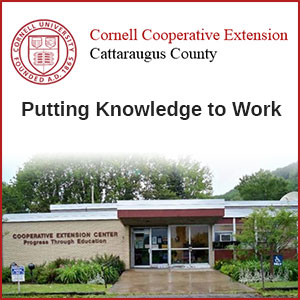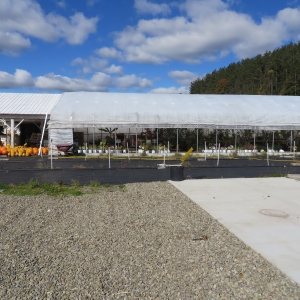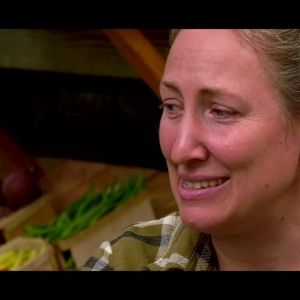Other Ag News:
WASHINGTON, August 12, 2025 – Five employees with the U.S. Department of Agriculture (USDA) Agricultural Research Service (ARS) and Animal and Plant Health Inspection Service (APHIS) have been honored with Service to America medals for their groundbreaking research and dedication to solving agricultural challenges that affect the nation every day, from field to table.
WASHINGTON, August 11, 2025 – The U.S. Department of Agriculture (USDA) today announced the call for nominations to serve on the USDA Tribal Advisory Committee. A total of four appointments will be made by U.S. Secretary of Agriculture Brooke L. Rollins and Ranking Member Angie Craig of the House Committee on Agriculture.
Your mind is one of the most important tools on your farm. Just like upgrading your equipment, continuing your education can make all the difference in the growth and success of your farm operation. If you want to enhance your business and technical skills to progress toward your farming goals, consider joining one of our online courses during the live instruction season beginning this fall.
Registration is open for more than three dozen Cornell Small Farms Program courses during our fall and winter instruction season, with the first block beginning in September. Courses include a combination of self-paced reading and assignments, along with live webinars with technical specialists where students can ask questions and engage with course material and fellow students in real-time. Each course is instructed by a member of our team of experienced farmers, extension educators, and agricultural service providers.
Select from a wide variety of topics, including everything from crop and livestock production to business management and personal wellbeing. We also offer a growing selection of courses conducted in Spanish.
One new addition to our suite of courses this year is the new self-paced course on Foundations of Beef Production. This new mini-course covers the most basic beef knowledge you need, from breeds to terminology to production systems. It is led by expert educators Betsy Hicks and Abbey Birchenough, and includes two free additional office hour sessions with them. If you are starting from zero, we recommend taking this mini-course and then enrolling in the live-instructed Beef Cattle Production and Management, which begins on Wednesday, September 24.
Registration is open now for all courses. Instruction for the first block, listed below, will begin the week of September 22.
-
-
- So you’re thinking about starting a farm, but feeling overwhelmed by all the decisions? Have your online searches turned up piles of information, but you still feel a bit lost? This course is designed to assist new and aspiring farmers in taking the first steps in thinking through farm start-up (whether you already have land access or not).
- Mondays from 6:30 p.m. – 8 p.m. ET
-
-
-
- ¿Está pensando en comenzar un negocio agrícola propio, pero se siente confundido por todas las decisiones que esto involucra? ¿Sus búsquedas en línea han arrojado mucha información, pero todavía se siente un poco perdido? Este curso está diseñado para ayudar a todas las personas que desean iniciar o son agricultores nuevos a dar los primeros pasos para iniciar su propio negocio agrícola (finca, rancho, granja), ya sea que tenga acceso a la tierra o no. Este curso es 100% en Español.
- Martes, de 6:30 p.m. a 8 p.m., hora del este
-
-
-
- There is only one guarantee in agriculture or other land-based businesses: “When we improve land health we realize improvements in production, profitability, and social well-being.” This course will teach farmers how to measure improved land health through reading the land as we walk across it, as well as conducting various biological monitoring practices, from simple to more complex.
- Mondays from 7 p.m. – 8:30 p.m. ET
-
-
-
- Pigs can function as a profitable stand-alone enterprise or can be integrated into your existing farm structure to provide a variety of products and utilize marginal lands that would otherwise go unused. This course will guide beginning farmers through the production and marketing of pigs raised in pasture settings.
- Thursdays from 6:30 p.m. – 8 p.m. ET
-
-
-
- Mushrooms are a fascinating set of organisms that are quickly gaining popularity for a wide range of applications from food to medicine to cleaning up toxic pollutants. This course offers an overview of the foundational knowledge needed to understand how mushrooms might play a role in your farm and/or greater community. Learn the basic biology and life cycle, proper harvest and identification, and examples of how humans are using mushrooms.
- Tuesdays from 6:30 p.m. – 8 p.m. ET
-
-
-
- This course is an introduction to QuickBooks, designed to provide an overview of the QuickBooks Pro software application. It will cover the basic features, such as sales tax, inventory, invoicing, adjustments, and year-end procedures. Students will gain hands-on experience in the concepts presented, as well as guidance on applying the concepts to their own farm bookkeeping.
- Tuesdays from 7 p.m. – 8 p.m. ET
-
-
-
- Interested in creating a farm that runs smoothly, having time for off-farm interests, and reducing your overall stress? In this course, farmer Allyson Angelini shares Holistic Management tools that will help you approach farming with intention, an eye for efficiency, and in ways that are more self-supportive. Learn to conduct an annual review, establish priorities, create an achievable plan, and connect with peers for support and encouragement.
- Wednesdays from 7 p.m. – 8:30 p.m. ET
-
-
- Having a successful cattle business is about much more than just buying a few head and putting them in a field. If you want to turn a profit, you need to think carefully about your goals, marketing strategies, appropriate breeds, and many more details. Over this six-week course, you’ll get a much clearer idea of what is involved, whether it’s the right fit for you, and if it is, what steps you need to take to get started.
- Wednesdays from 6:30 p.m. – 8 p.m. ET
After enrolling in a course, all of the materials can be accessed through our single, user-friendly online platform. At the conclusion of live course instruction, students will be granted lifetime access to the materials and webinar recordings.
In our ongoing commitment to equitable access to education, we have maintained tiered pricing for our courses based on household size and income. We also offer scholarships for eligible farmers in New York who face an entry barrier to farming, and for military veterans in New York State.
In recent years we added “Growing Uncommon Fruit,” which will help you determine whether incorporating uncommon fruit into your operation is the right decision for you, “Goat Production,” which will guide beginning farmers through the production and marketing of goats for dairy, meat and fiber, and “Identifying and Partnering with Mushrooms in Farms, Gardens and Forests” to teach you basic ID, species, life cycle, and potential applications of mushrooms to solve community-level challenges. Other newer additions include “Stress Reduction for Farmers,” which offers strategies for streamlining your farm; “Access to Capital” for anyone seeking funding for a farm enterprise; “Cut Flower Production” on the business of flower farming; a course on “Beef Cattle Management;” a primer on “Social Media & Online Marketing” for your farm business; and a 4-week intensive in how “Reading the Land” can help you monitor its health.
In addition to new courses, we have expanded our Spanish-first online course offerings with our “BF 101: Cómo Iniciar su Negocio Agrícola” and “BF 102: Mercados y Rentabilidad.”
You can browse all of our course offerings on our website. You can learn more about our courses, including answers to common questions, on our course FAQ.
The post Cornell Small Farms’ Growing Online Course Offerings Begin Live Webinars this Fall appeared first on Cornell Small Farms.
Thanks to a multi-year strategic approach to improve the security of our information systems and effectively manage information technology resources and risks, the U.S. Department of Agriculture (USDA) earned a maturity score of 4 out of 5 for the first time ever in the 2025 Federal Information Security Modernization Act (FISMA) audit.
Summer is always a prime time for vacations, and many dream of a beach getaway. This year, travel trends suggest folks are budget-conscious and may be sticking closer to home for their beach time, opting for destinations like Puerto Rico or the U.S. Virgin Islands.
(Washington, D.C., August 9, 2025) – U.S. Secretary of Agriculture Brooke L. Rollins today announced $152 million in investments for 19 rural development projects in communities across the State of Iowa. These unprecedented, coordinated U.S. Department of Agriculture (USDA) Rural Development (RD) project will help boost Iowa’s economy, develop rural infrastructure, and encourage private investment in America’s heartland.
(Washington, D.C., August 9, 2025) – U.S. Secretary of Agriculture Brooke L. Rollins announced President Trump’s nominations of key USDA leadership at the Iowa State Fair. This rounds out the senior leadership of USDA.
(Washington, D.C., August 8, 2025) – U.S. Food and Drug Administration Commissioner Dr. Marty Makary, M.D., M.P.H., and U.S. Secretary of Agriculture Brooke L. Rollins this week announced plans to support American citrus growers and cut bureaucratic barriers by proposing an update to the standard of identity (SOI) for pasteurized orange juice. This America First action will end a 60-year-old rule that hurts domestic farmers and forces reliance on foreign imports. The FDA expects this change is unlikely to affect the taste of pasteurized orange juice.
(Washington, D.C., August 8, 2025) – U.S. Deputy Secretary of Agriculture Stephen A. Vaden yesterday hosted the fifth day of the Great American Farmers Market on the National Mall with an evening celebrating the beauty of our nation’s land, people, and agriculture.
(Washington, D.C., August 8, 2025) – U.S. Secretary of Agriculture Brooke L. Rollins published an opinion piece in the Washington Examiner highlighting the significance of the Great American Farmers Market as a national celebration of local products, American agriculture heritage, and the farmers, ranchers, and producers who feed and fuel our nation.
Pages
Signup for the Ag Newsletter
Get the freshest farm news, events and updates from in and around Cattaraugus County, NY at least once a month! Go signup!
Other ways to stay connected:
Get Involved in Farming
Resources for Starting a Farm in Cattaraugus County
Profile of Cattaraugus County soils
Agriculture Career Exploration
Questions about farming? Find out Who to Call











